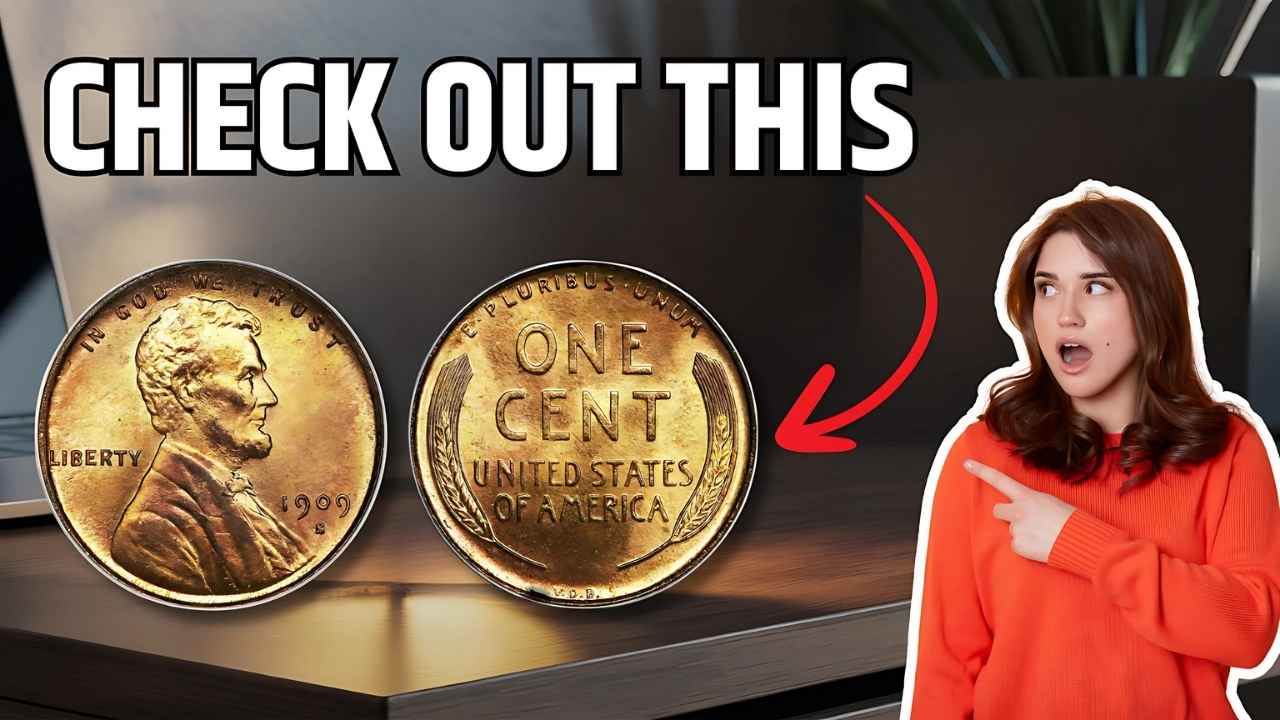Lincoln Wheat Penny: When the Lincoln Wheat Penny made its debut in 1909, it wasn’t just a coin, it was a turning point in U.S. coinage history. For the first time, a real person appeared on circulating American currency: none other than President Abraham Lincoln.
This historic move marked the 100th anniversary of Lincoln’s birth and replaced the usual mythical figures that had dominated designs. A simple copper coin was transformed into a tribute to a president who redefined a nation.
The Art Behind the Coin
The credit for the penny’s design goes to Victor David Brenner, a sculptor who skillfully portrayed Lincoln’s calm strength. The obverse showcases Lincoln’s profile with striking detail, while the reverse features two wheat stalks surrounding the denomination, an elegant nod to the country’s agricultural foundation.
This design remained untouched for nearly 50 years, becoming one of the most recognizable images in American coin history. Its staying power reflected not just artistic brilliance, but deep emotional value.
Hidden Gems: The Pennies That Made History
Among the countless Wheat Pennies minted over the decades, a few rare examples have become legends. One of the most sought-after is the 1909-S VDB, which had Brenner’s initials boldly stamped on it. Following public backlash, the U.S. Mint quickly removed them, leaving behind a very limited number of these coins, instantly making them collector’s gold.
Even more extraordinary are the mistakes from 1943, when copper was being conserved for World War II. That year, pennies were meant to be made of steel. However, a few copper (bronze) blanks were accidentally used, creating what’s now considered the crown jewel of penny collecting.
One of these 1943 bronze pennies fetched $1.7 million at auction, and whispers in the numismatic world suggest private buyers have paid up to $4.1 million for this rare anomaly.
The Million-Dollar Mistake That Keeps Giving
Imagine owning a coin worth millions, by accident. That’s what happened to a handful of lucky individuals who stumbled upon the 1943 bronze penny. A simple oversight at the mint turned a one-cent piece into a life-changing treasure. Stories continue to surface, making collectors and casual hobbyists wonder if the next jackpot might be sitting in an old drawer or coffee can.
How to Spot a Potential Fortune
These rare coins often show up in the most unexpected places. One retired postal worker discovered a rare 1943 steel penny in his father’s tackle box, later valued at $875,000. If you want to join the treasure hunt, keep your eyes peeled for these features:
- 1909-S VDB, rare with the designer’s initials
- 1943 bronze penny, unlike the usual silver-colored steel
- Coins with San Francisco “S” mint marks
- Double strikes or minting errors
Though finding one is rare, the possibility alone makes checking your spare change a thrilling experience.
A Piece of the Past, in Your Palm
Beyond their potential value, Lincoln Wheat Pennies offer a direct connection to American history. They blend artistry, symbolism, and national pride, all wrapped into a coin that many once overlooked. In our digital age, these coins remind us of the craftsmanship and stories hidden in physical currency. They are more than metal; they are mementos of a different time.
Frequently Asked Questions
Why are some Lincoln Wheat Pennies worth so much?
The rarest ones combine low mintage, historical significance, and production errors—making them exceptionally desirable to collectors.
What does “VDB” mean?
These are the initials of Victor David Brenner, the original designer. On the rare 1909-S VDB penny, they appear prominently on the reverse, which caused controversy at the time.
How can I tell if my Wheat Penny is valuable?
Check the year, mint mark, and color. If something looks unusual—or matches a known rare variety—have it inspected by a coin expert or grading service.
Can these rare pennies still be found today?
Yes, though rare, they do turn up from time to time—often in old collections, inherited items, or even loose change.
What’s the highest price paid for a Lincoln Wheat Penny?
A 1943 bronze penny reportedly changed hands in a private sale for an astonishing $4.1 million—the record for the series.




